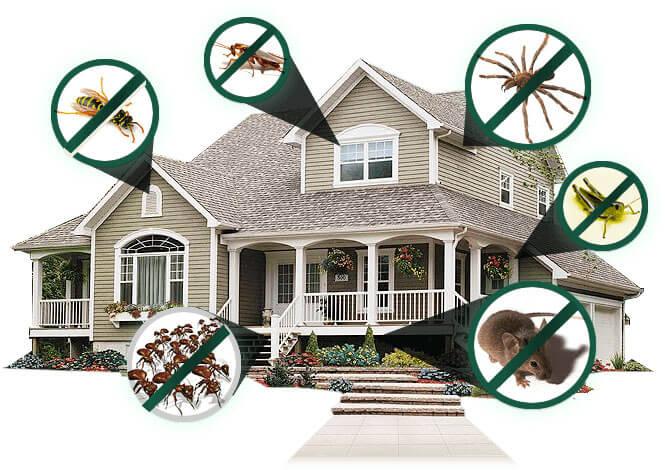A1 Pest Control Charlotte NC Bed Bugs - Specialist Elimination Services
A1 Pest Control Charlotte NC Bed Bugs - Specialist Elimination Services
Blog Article
Bed Insect Treatment Break Down: Comparing Chemical Vs. Non-Chemical Solutions
In the realm of insect control, specifically when taking care of the persistent concern of bed bugs, the option between chemical and non-chemical therapy options can be a pivotal one. Both methods supply distinctive benefits and downsides, affecting factors such as effectiveness, safety and security factors to consider, and total price. By taking a look at the nuanced details of each approach, a clearer understanding of which path to pursue in resolving a bed bug infestation can be acquired.
Performance of Chemical Therapies
Chemical therapies for bed insect problems have been extensively acknowledged for their powerful and fast effectiveness in eradicating these insects. When thinking about the efficiency of chemical therapies, it is vital to recognize that they can give a quick and comprehensive option to a bed bug trouble.
Furthermore, chemical therapies have the benefit of using recurring effects, suggesting that they can remain to remove bed bugs also after the first application. This residual activity is especially advantageous in combating any kind of possible re-infestations. In addition, the rapid activity of chemical therapies can bring alleviation to individuals dealing with extreme bed bug invasions, permitting them to regain control of their living areas promptly.
Security Worry About Chemical Solutions
One critical aspect that calls for cautious consideration when utilizing chemical solutions for bed pest therapy is ensuring the safety of owners and the environment. Direct exposure to certain chemicals utilized in bed pest treatments can lead to breathing concerns, skin inflammation, or various other adverse reactions, particularly in people with pre-existing conditions or level of sensitivities.
Moreover, the environmental influence of chemical solutions is an additional significant factor to consider. Some pesticides used in bed insect therapies may be hazardous to beneficial pests, wild animals, and ecosystems if they leach right into the dirt or water supply. It is vital to utilize chemical therapies deliberately, following safety guidelines, and thinking about much less toxic alternatives to alleviate these threats and guarantee the secure and effective monitoring of bed bug problems.
Benefits of Non-Chemical Techniques
Considering the potential safety and security issues and environmental influence connected with chemical solutions for bed pest treatment, discovering non-chemical methods presents an appealing alternative with numerous distinct advantages. Non-chemical treatments are ecologically friendly, as they do Extra resources not contribute to air or water air pollution, making them a sustainable selection for bug control.
Furthermore, non-chemical solutions can be reliable in targeting bed pests, including hard-to-reach locations where chemical treatments Read More Here might not pass through. Methods such as warmth treatment, vacuuming, heavy steam cleansing, and mattress encasements give detailed elimination without using damaging chemicals. In addition, non-chemical methods can be much less turbulent, needing very little prep work and permitting quicker reentry into treated areas. On the whole, going with non-chemical bed pest therapy approaches not just prioritizes safety and security and environmental defense however also guarantees reliable and thorough bug control.
Limitations of Non-Chemical Treatments

In addition, non-chemical therapies often need several applications to accomplish effective obliteration. This can be time-consuming and may not constantly ensure full removal of all bed pests and their eggs, particularly in hard-to-reach or covert locations.
In addition, the success of non-chemical treatments heavily depends on correct execution and thoroughness, which can be testing for people without specialist experience. Inadequate application of non-chemical methods might cause insufficient removal, causing consistent invasions and the requirement for extra therapies.
Therefore, while non-chemical click for info treatments have their benefits, it is important to recognize these restrictions and consider them when establishing one of the most reliable technique for handling bed insect invasions.
Price Contrast: Chemical Vs. Non-Chemical Options
Provided the constraints associated with non-chemical treatments, an important element to assess in the context of bed pest management is the expense contrast in between chemical and non-chemical options. In contrast, non-chemical therapies like warmth treatment or steam can be much more pricey, with costs ranging from $1,000 to $6,000 for an entire home. While the preliminary price of chemical treatments might seem reduced, numerous therapies may be needed to totally eliminate the infestation, possibly boosting the overall cost.
Verdict

Taking into consideration the prospective security problems and ecological influence associated with chemical services for bed pest therapy, exploring non-chemical approaches presents an appealing option with numerous distinctive advantages.Offered the limitations associated with non-chemical therapies, a vital element to examine in the context of bed insect administration is the price comparison between chemical and non-chemical options. In contrast, non-chemical therapies like warmth treatment or heavy steam can be much more costly, with costs ranging from $1,000 to $6,000 for an entire home. While the first cost of chemical treatments might appear reduced, several treatments might be needed to completely eliminate the infestation, potentially increasing the overall cost.In verdict, when contrasting chemical and non-chemical bed pest therapy options, it is important to take into consideration performance, security, advantages, restrictions, and cost.
Report this page